Affiliate links on Android Authority may earn us a commission. Learn more.
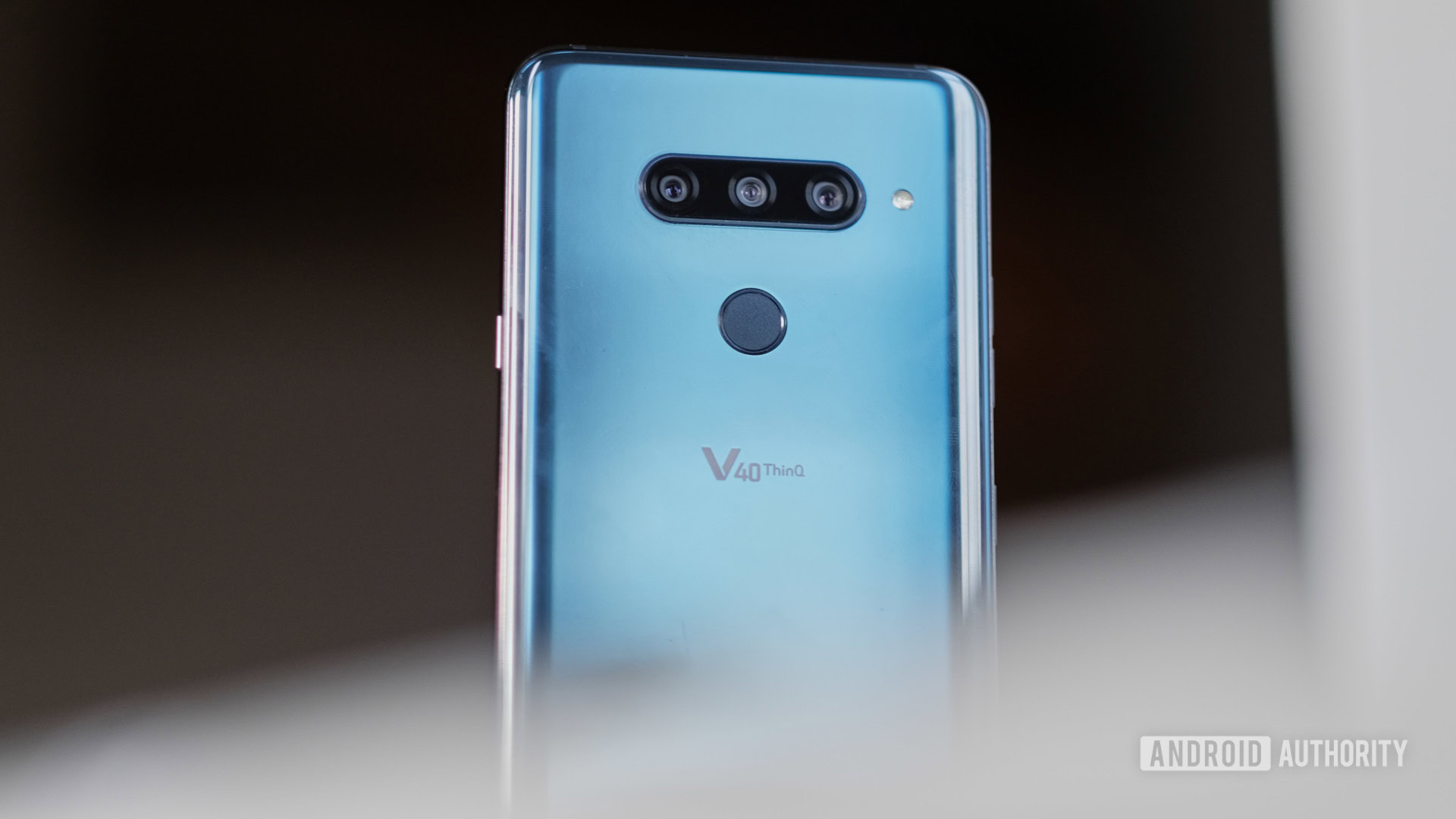
LG V40 ThinQ review: Undeveloped innovation
Published onJanuary 19, 2019
LG V40
What we like
What we don't like
Our scores
LG V40
Editor’s note: This review was originally published October 19, 2018. It has been reprinted with new information on pricing and a few other small details.
LG’s V-series has always been about doing it all. Last year’s LG V30 boasted one of the most feature-packed cameras of all time in a mobile device, and the Quad DAC audio solution was a treat for music lovers. This year, LG is taking things a step further.
While most manufacturers have adopted dual cameras to allow for things like portrait mode and telephoto lens options, LG’s has added five cameras total to the V40, allowing for ultra-wide, telephoto, and front-facing portrait options, in addition to the standard set of lenses.
With this and a couple of new software improvements, the V40 is a compelling phone on paper. But does its value add up to more than the sum of its parts? This is our LG V40 review.
The LG V40 review unit was provided to Android Authority by LG.
LG V40 review: Design
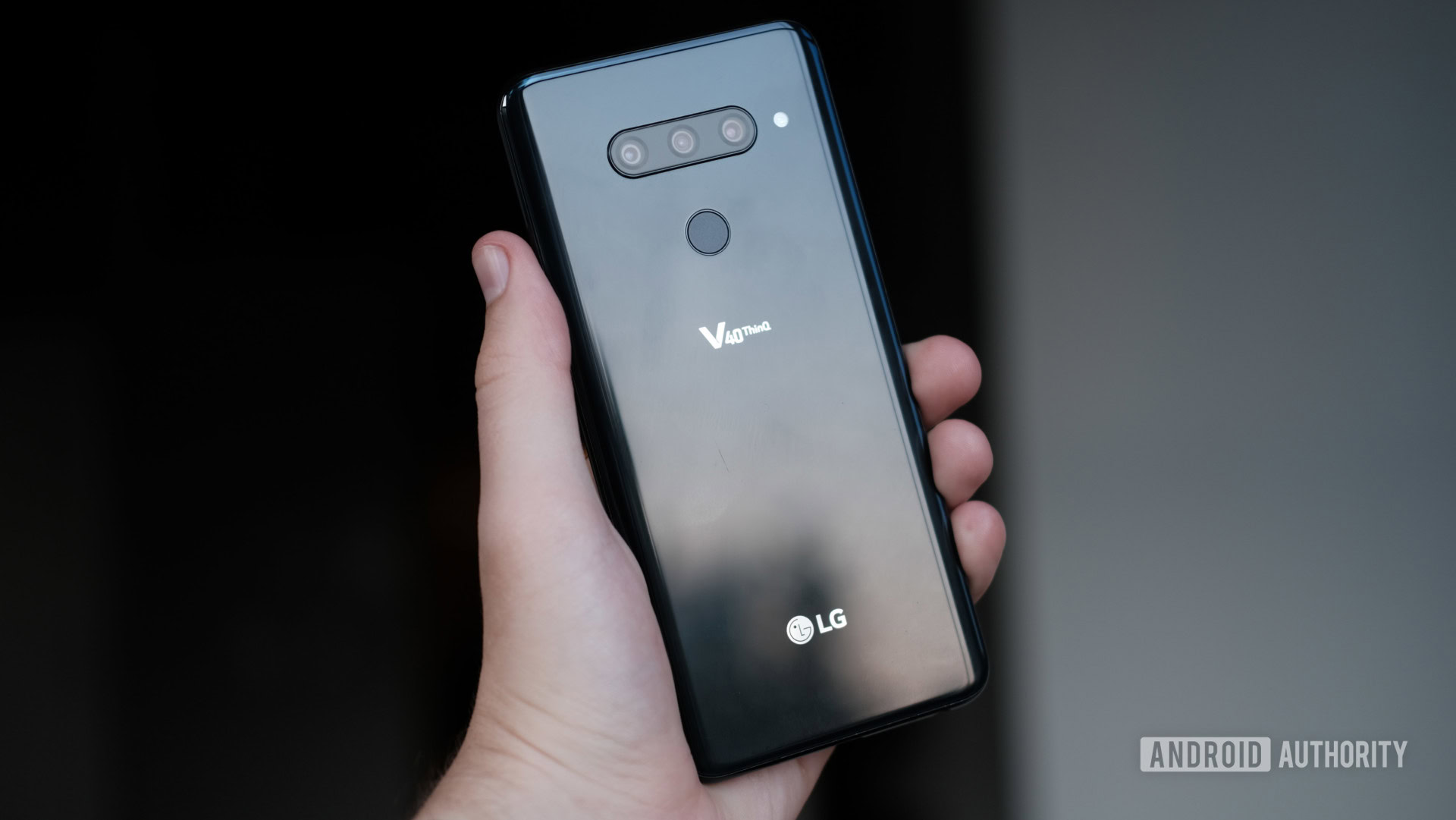
If you enjoyed the look of the LG V30, you’ll feel right at home with the V40. It has the familiar rounded design V-series users have come to know, but bumps things up a notch with the huge 6.4-inch display. This phone is big — there’s no getting around that fact, but it’s a good option for someone that wants a big phone that isn’t a Samsung Galaxy Note 9.
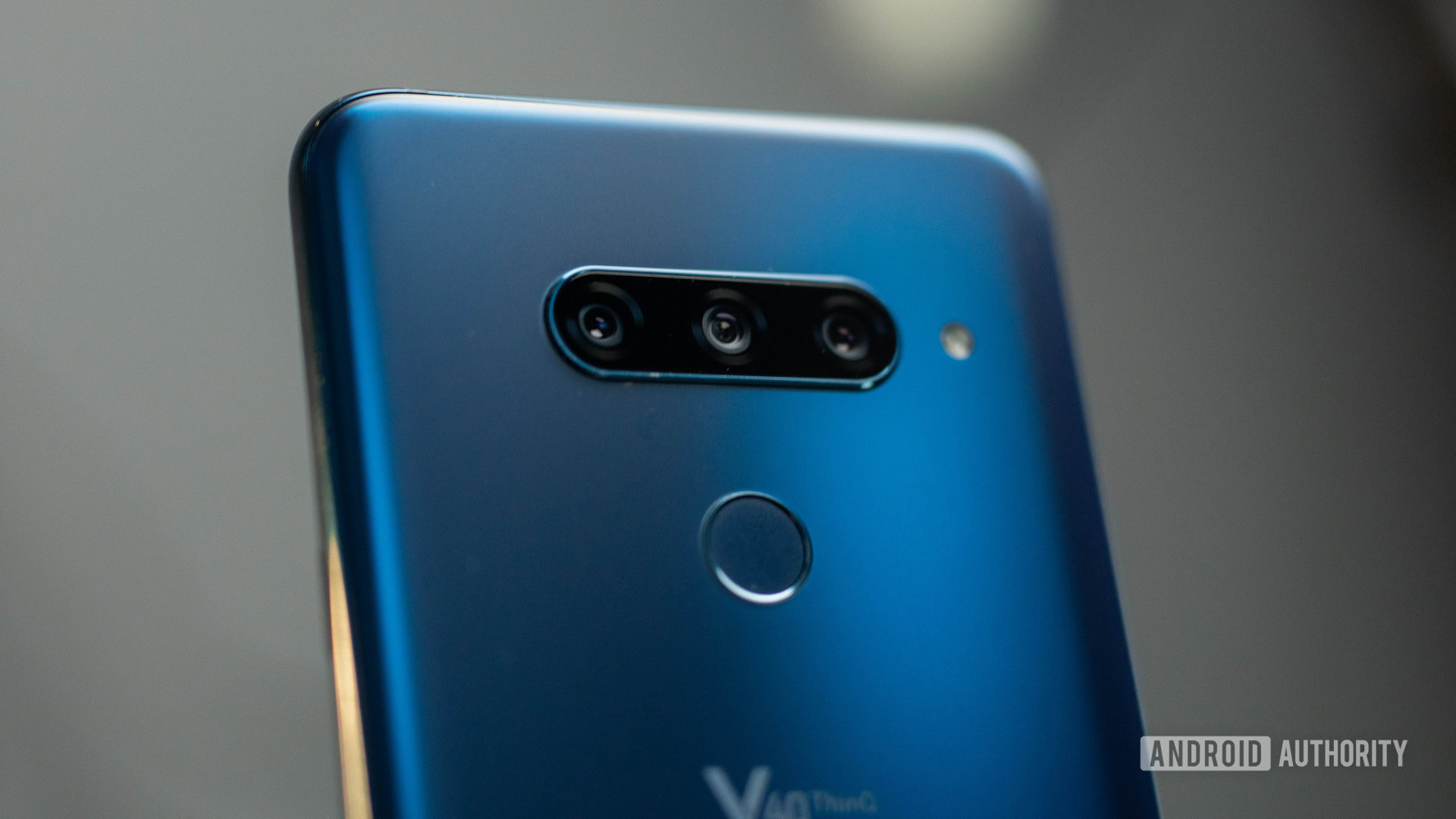
The V40 has a notch, though it is quite a bit smaller than many other phone notches, despite sporting two different cameras within it. This allows for things like wide-angle selfies and portrait mode using the front shooter, something I’m glad LG is continuing. The phone also intelligently hides the notch when you’re on the home screen, and you can customize that area with different colors and designs, or hide it completely.
The LG V40 has five cameras in total: three on the back and two on the front.
The back of the phone looks extremely similar to the V30, with a Gorilla Glass 5 panel, a fingerprint reader, and a camera module. This year, the camera module adds an additional sensor, summing to three in total. The phone has a standard 12MP sensor with a 78-degree field of view, an ultra-wide sensor with a 107-degree field of view, and a 2x zoom lens with a 47-degree field of view.
I was worried this would look a bit ridiculous, but it actually looks fairly decent — the functionality is more important to me anyway.
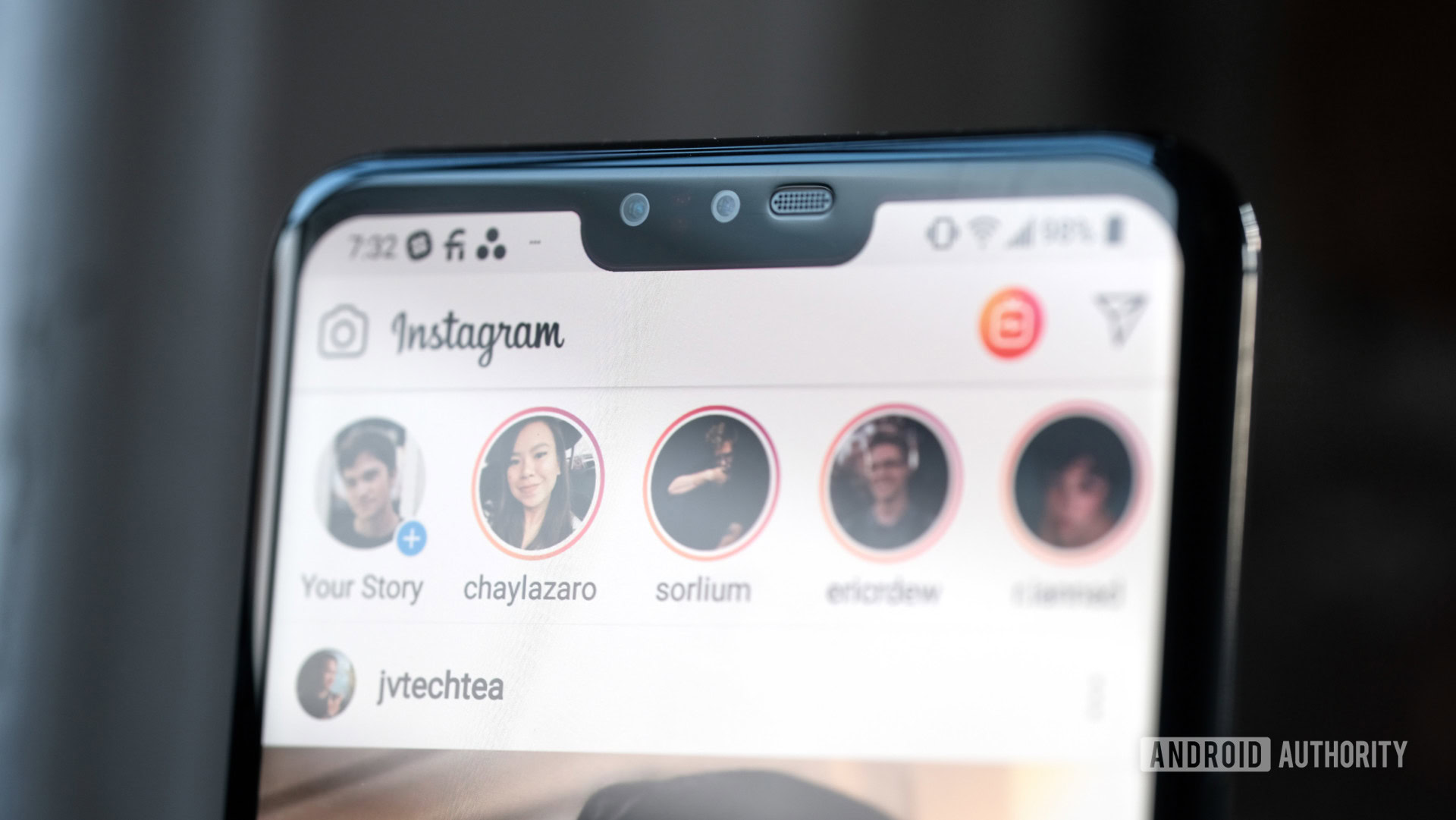
The right side of the phone houses the power button and SIM card tray, while the left side stores the volume rockers and Google Assistant button. I’m extremely happy LG decided to put the Google Assistant button in the V40. I personally think Google Assistant is the only viable assistant on Android, and Samsung’s dedicated Bixby button could have been just as useful had it allowed remapping.
The V40 ThinQ has a dedicated power button, so the fingerprint reader is now just a fingerprint reader. Unfortunately, it also seems like a very poor fingerprint reader. Most fingerprint readers are extremely fast by now, but the V40’s seems quite slow. A lot of the time the phone just won’t recognize me trying to unlock my device with it either, and I found that fairly annoying during my time with the phone.
The LG V40 includes a headphone jack and the same Boombox speaker from the LG G7.
The LG V40 also includes the same “resonance chamber” Boombox speaker from the LG G7, a USB Type-C port, and a headphone jack on its bottom. LG seems to keep adding more and more features to its flagships instead of removing them, and I’m very happy about that. Samsung is just about the only other major manufacturer to retain the headphone jack, so you don’t have a lot of options if you’re serious about audio.
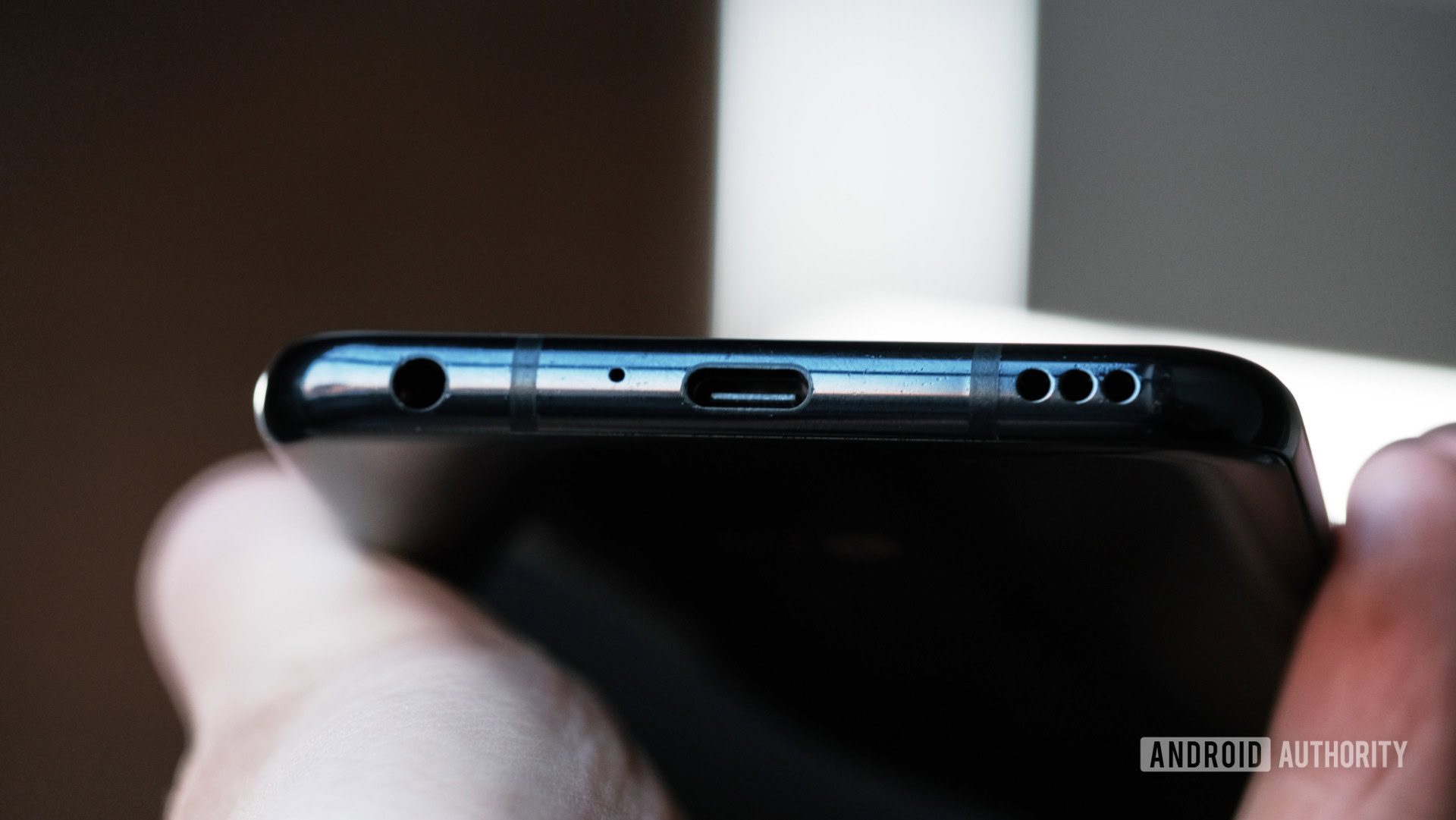
LG prides itself on keeping its phones extremely lightweight, and the V40 continues this trend. I like denser, heftier phones — they give me the sense I’m actually getting value for my money — but I can appreciate the engineering that went into making the phone so light. Sure, this is extremely subjective, but this is a review, after all. I like my phones heavy.
LG’s marketing described the V40 as “silky.” I’m not sure where that came from. The phone feels the same as the V30, which means the aluminum sides still feel a little bit cheap. I would have preferred a sturdier metal at the cost of weight.
Overall though, I still really like the feel of the V40 ThinQ. The size makes it a true competitor with the Samsung Galaxy Note 9, and the bezels are surprisingly small compared to a lot of other devices.
LG V40 review: Display
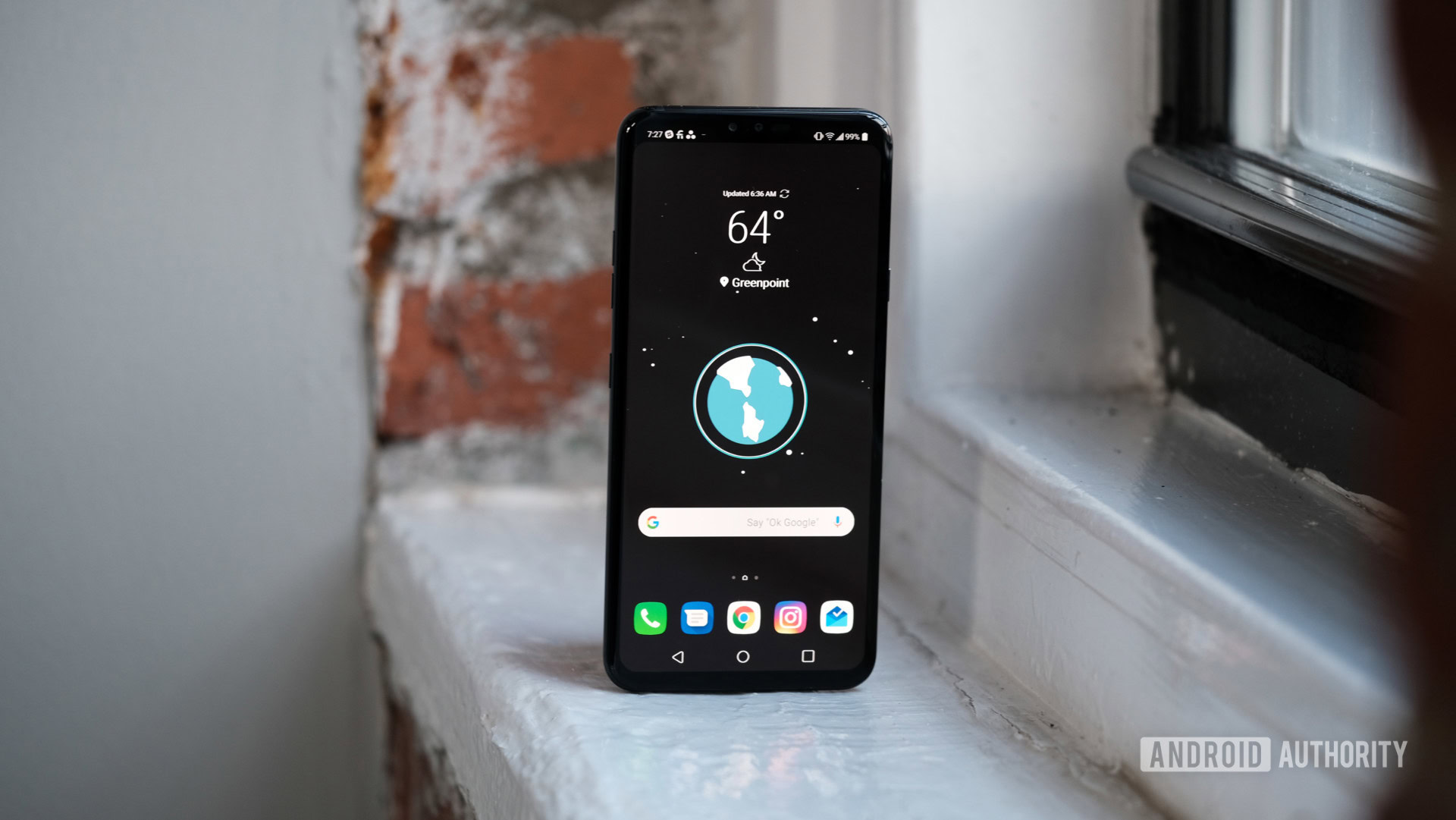
The LG V40 sports a display resolution of 3120 x 1440, set to 2340 x 1080 by default. The screen looks okay, but it definitely isn’t as crisp and punchy as something like the Samsung Galaxy Note 9. The V40 packs 538 PPI, which strangely doesn’t feel that sharp to me. As a display manufacturer who makes incredible TVs and other panels I hoped LG would use its best of the best, but that still doesn’t seem to be the case.
Gone is the LCD screen from the LG G7, replaced with an OLED panel instead — this time without light bleed issues. This panel produces nice, even lighting, and I didn’t notice any blue shift at different angles. Unfortunately, it also doesn’t get very bright. The V40 doesn’t carry over the 1,000-nit LCD panel from the G7, and while it’s nice to use an OLED again, I’m missing the brightness LG offered in the G7. It’s a bit hard to see the V40 outside, and that’s a big bummer.
The LG V40 switches to OLED and thankfully has no light bleed issues, although I do wish it was brighter outdoors.
Colors are extremely punchy on this thing, almost a bit too punchy for my liking. Skin tones and reds seem a bit over-saturated, and you’ll probably either love them or hate them. I just came from the Xiaomi Mi 8, which has a fairly cool color temperature in its display — that is anything but the case here. LG likely made this move to make content consumption a bit more enjoyable, but whether it actually will depends on you.
The LG V40 is also HDR10 compatible, meaning you can watch content with more colors than standard displays. If you need clarification on what exactly HDR10 is, our friends at DGiT have a great rundown here.
LG V40 review: Performance
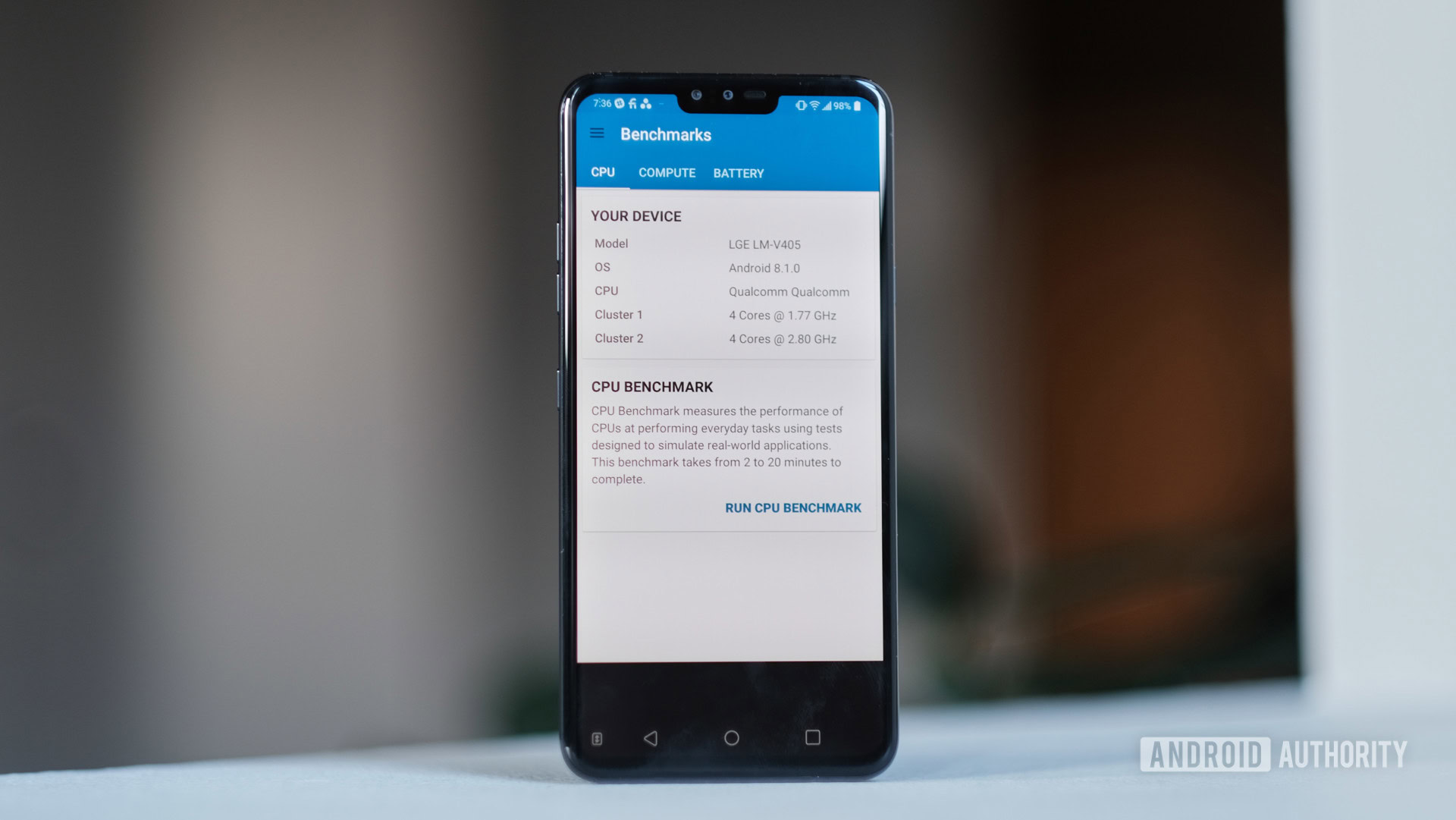
Like most other flagship devices in 2018, performance on the V40 was generally solid. I saw few hiccups here and there fairly randomly, but they were just small stutters. Apps launched very quickly and multitasking was a breeze. You shouldn’t have any trouble keeping up with your everyday tasks on the V40.
If you’re interested in benchmarks, we’ve got them. We ran the V40 ThinQ through Geekbench 4, AnTuTu, and 3DMark benchmark tests. You can see the results below.
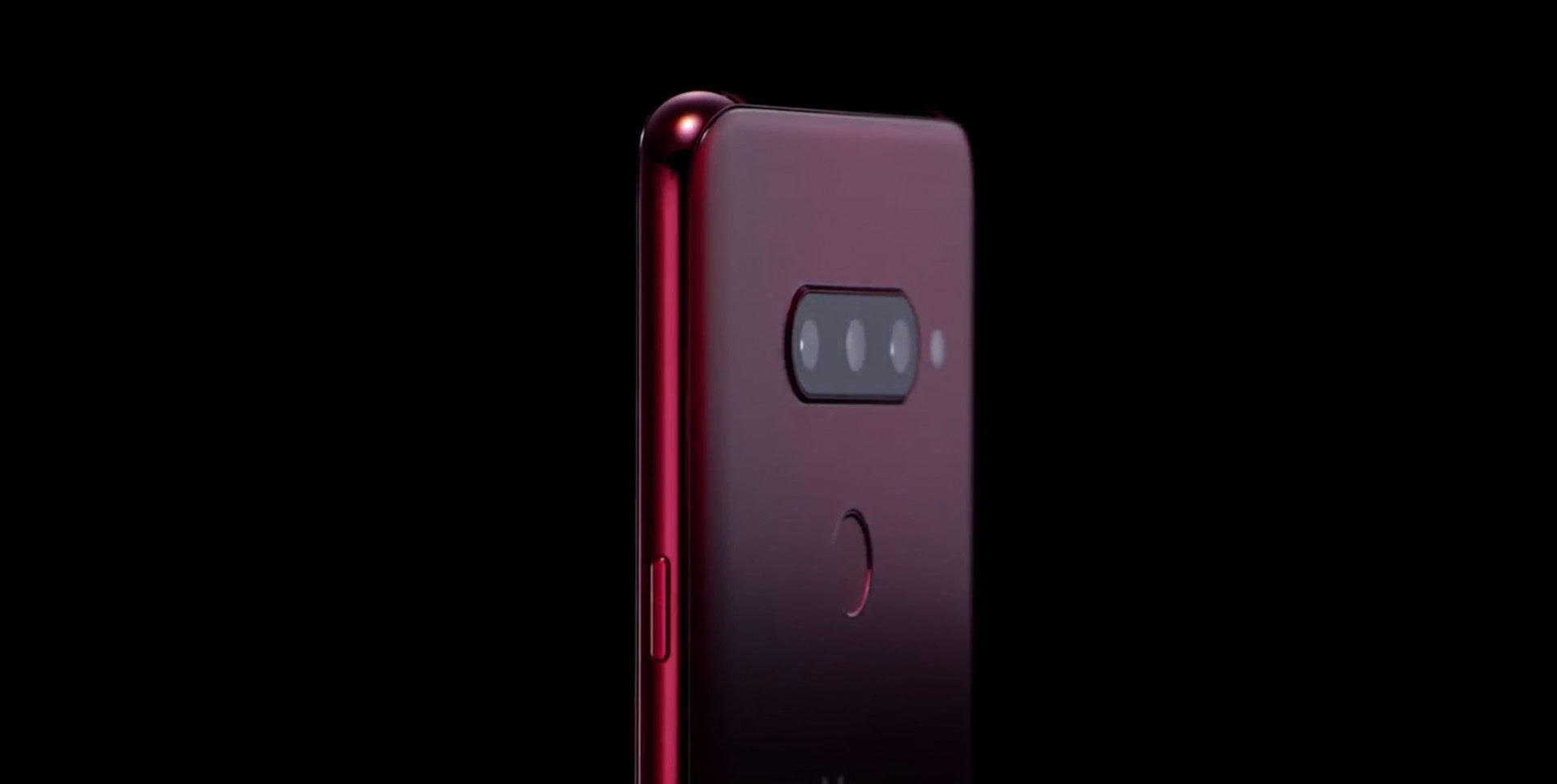
LG V40 review: Hardware
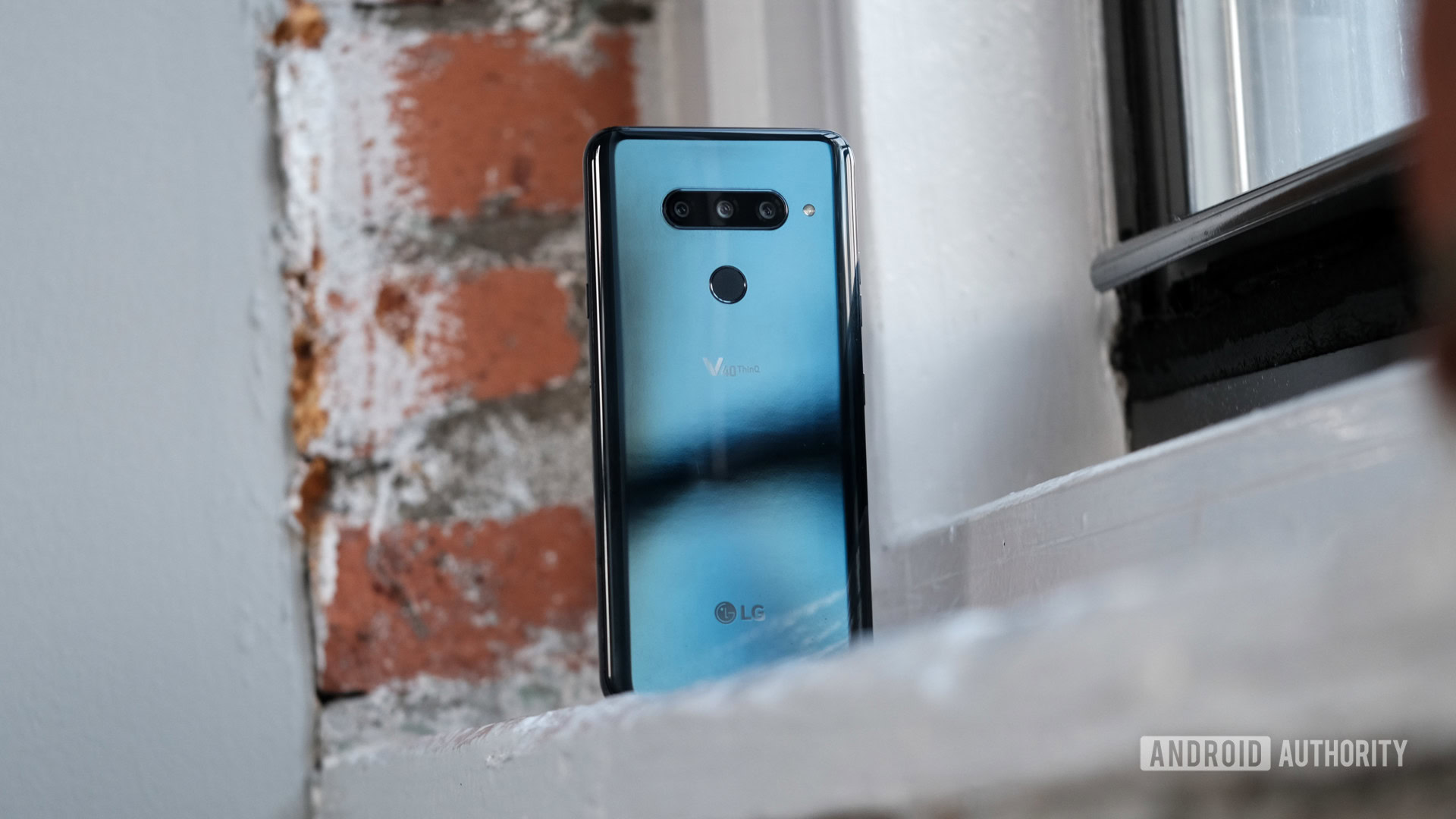
The LG V40 is a true 2018 flagship. With a Qualcomm Snapdragon 845, 6GB of RAM and 64GB of storage, it can compete head to head with many of the other leaders on the market.
64GB is the only storage option available in the U.S. (a 128GB version will be available in South Korea). This is purely subjective, but I was hoping for more. Many other U.S.-bound flagships have launched with 128, 256, and even 512GB storage options in 2018, so it’s a bit of a bummer to see the V40 lagging behind. The V40 does include optional microSD card expansion, meaning you can at least load it up with one of those 400GB SanDisk cards, which went on sale for $100 the other day.
Many might argue 64GB is plenty for most people and I’d agree, but you would hope LG would at least pass on the savings to the consumer for using a storage option this low.
Unfortunately, the 3,300mAh battery in the LG V40 produces pretty unspectacular battery life.
The battery in the LG V40 is 3,300mAh, which is admittedly a bit small for a screen this large. This also translates fairly directly into screen-on time. Over the six days I’ve been using the phone I have gotten between four and five hours of screen-on time, leaning towards four on average. This isn’t exactly ideal, especially when LG markets this as the phone that can do everything. I would have loved to see a 4,000mAh battery to properly compete with Samsung’s Note 9, but unfortunately we won’t see that this year.
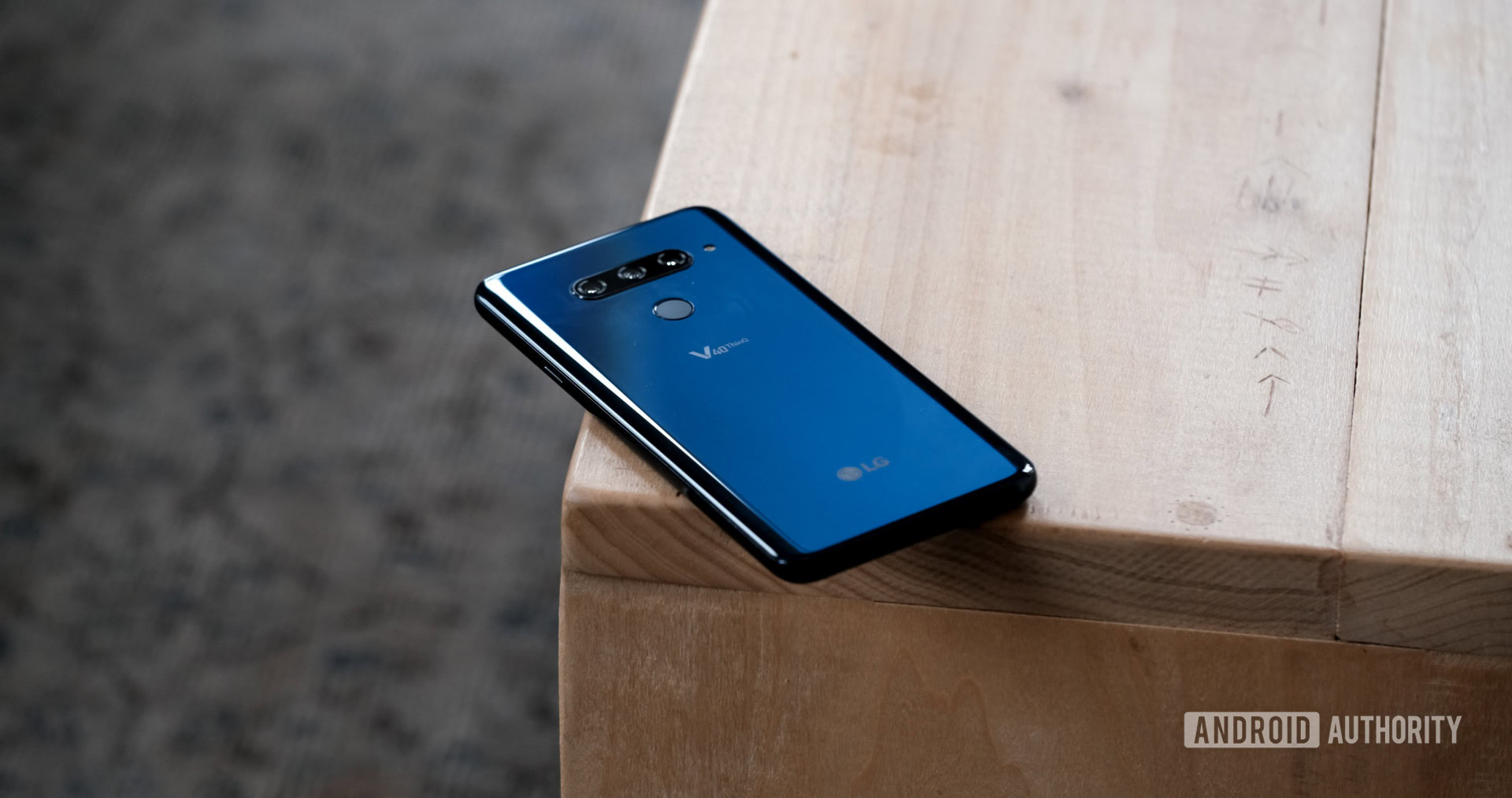
LG’s famous 32-bit DAC is back this year, bringing high-fidelity audio which sounds better than just about any other smartphone right now. LG is committed to filling the high-quality audio niche, at least until it becomes clear consumers don’t care about 3.5mm anymore. For now, it’s fairly clear consumers see the removal of the jack as a bad move, and LG is one of the few companies still listening.
If you’d rather play music directly from your phone, LG also included its Boombox speakers from the LG G7 in this device. The phone definitely gets loud, but I didn’t feel quite as loud as the G7. Unfortunately, I didn’t have a G7 on hand to actually test this definitively, but we’ll be running audio benchmarks in our testing suite down the line.
LG's famous 32-bit DAC delivers high-fidelity audio that's better than just about any other smartphone.
One feature that I would like to highlight in particular is the quality of the vibration motor in this device. LG devices have had pretty great haptics the last couple of iterations, but I don’t think they get enough attention. While the haptics are not quite as good as they are in the LG G7, this is still miles better than most other Android phones on the market.
The phone is also IP68 water resistant and includes wireless charging, so you won’t be missing out on any bells or whistles by buying this device.
LG V40 review: Camera
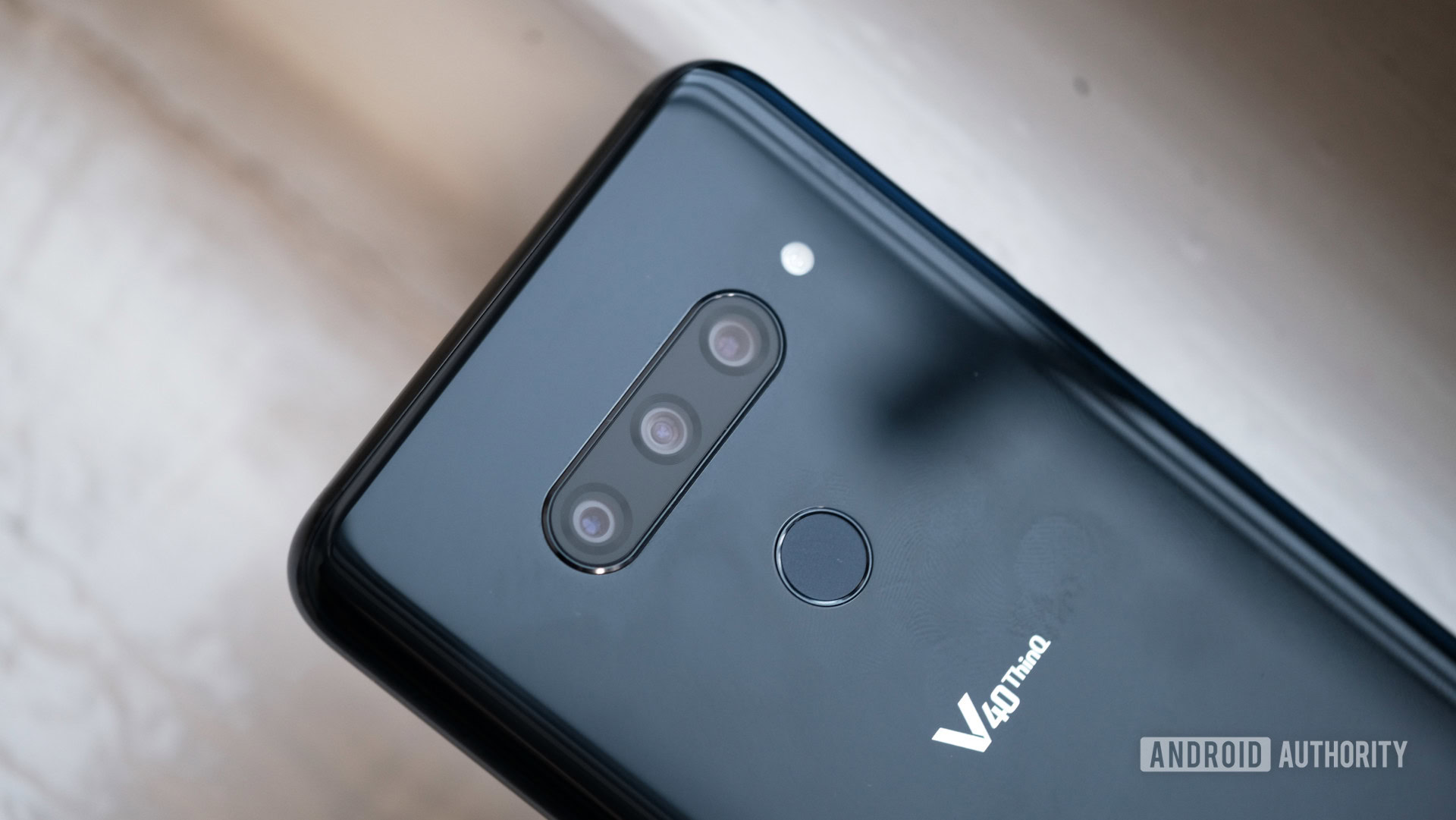
Like with every device in the V-series, the cameras on the LG V40 are undoubtedly the star of the show.
This year, LG decided to go all out, including three cameras on the rear of the device. Some manufacturers include a wide-angle or a telephoto zoom in addition to the primary sensor, but LG decided to do both. The LG V40 ThinQ has a standard 12MP lens with an f/1.5 aperture and 78-degree field of view, a 16MP wide-angle lens with an f/1.9 aperture and 107-degree field of view, and a 12MP 2x telephoto lens with an f/2.4 aperture and 45-degree field of view.
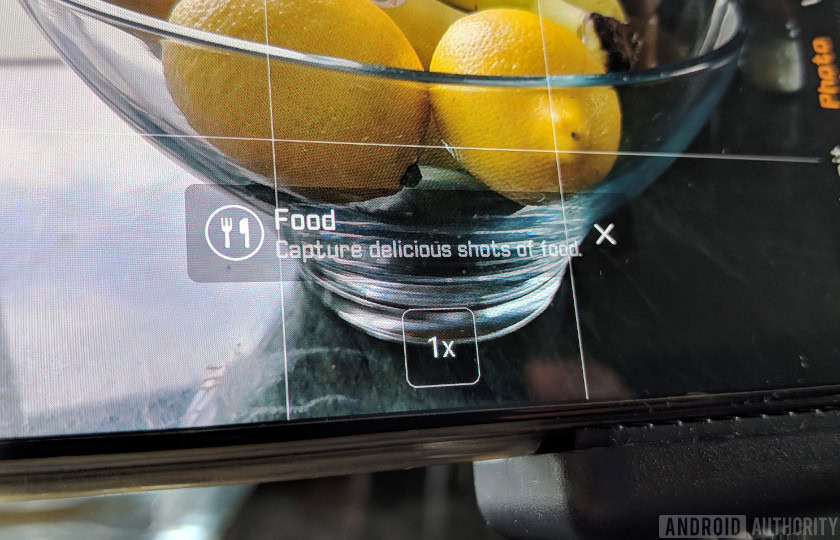
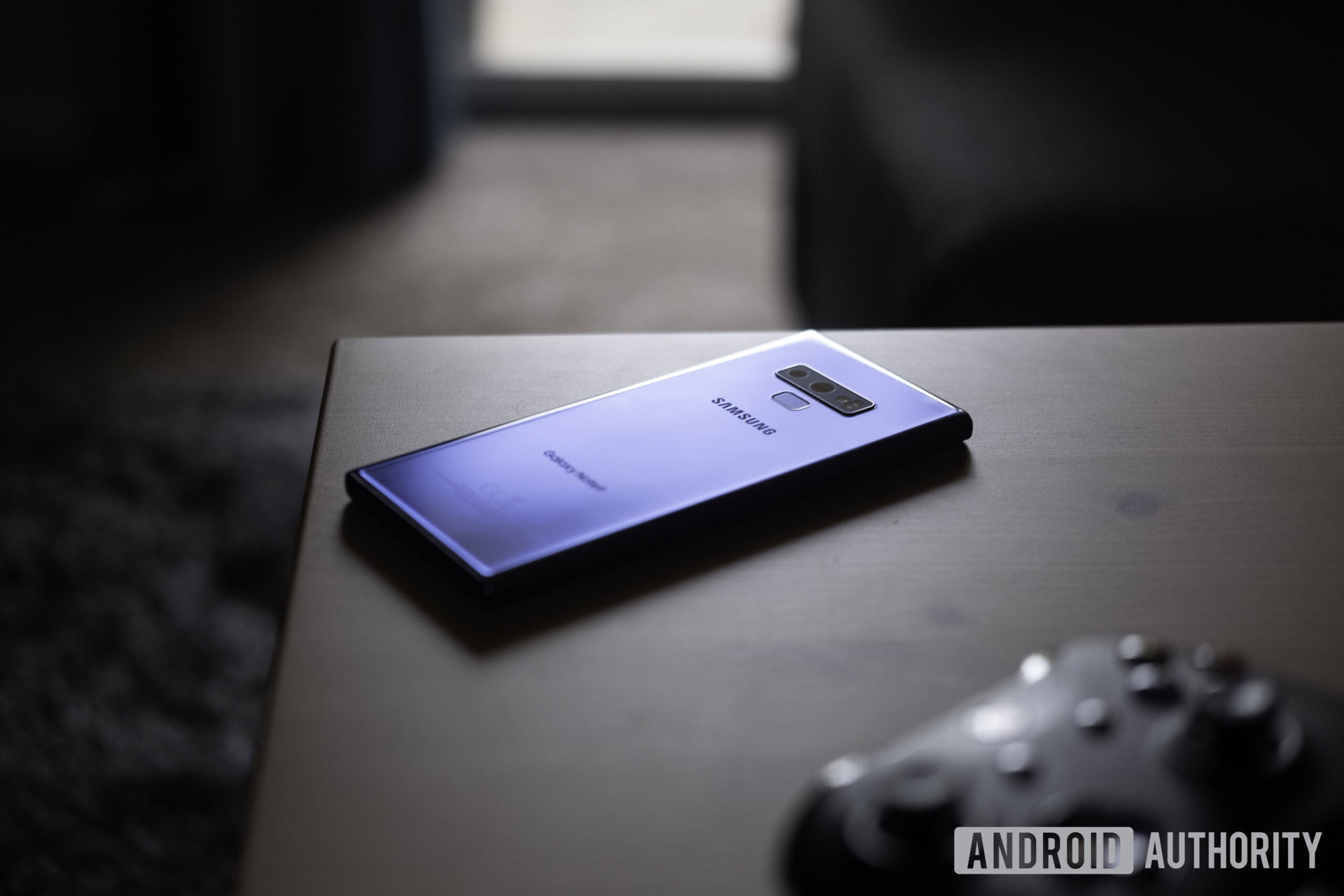
These cameras have some special tricks, and the software lets you do things like see all camera angles before taking the shot so you can use the best camera for the situation. There’s even a mode that lets you take a photo with all three cameras simultaneously. If you’re not sure which angle you like best this is a good option, but I found myself choosing to shoot a single photo instead.
If you take an image with all three, the V40 ThinQ turns the frames into a short movie, pretending like it is slowly panning into a scene. It’s a nice idea, but in reality it’s more like tapping your way around Google Street View.
The V40 has another special feature which we were able to check out a bit early, called Cine Shot. This effectively allows the user to create cinemagraphs — photos with moving elements. This feature is really quite cool, and you can see it in action over at our dedicated post here. You can also use this feature with any of the three lenses on the back of the phone, giving you full control of your creativity.
While the wide-angle camera has great clarity and color reproduction, the 2x optical zoom sensor was quite a let-down. Using optical zoom vs digital should theoretically keep the photo nice and sharp, but it seemed much noisier and muddier than the other cameras and just felt like digital zoom. I would have liked to see a clean optical zoom, otherwise there are ways to make digital zoom cleaner through software.
There are two front-facing cameras in total: one standard lens with an 8MP sensor, f/1.9 aperture, and 80-degree field of view, and one wide lens with a 5MP sensor, f/2.2 aperture, and 90-degree field of view. This allows for wide selfie shots as well as portrait mode. From the shots I’ve taken so far, they look quite good. Many manufacturers are still new to portrait modes, but LG seems to have done a good job here. You can also change the level of bokeh after you take the shot, a feature that is becoming quite popular in most flagship smartphones.
While the wide-angle camera has great clarity and color reproduction, the 2x optical zoom sensor was a let-down.
Google Lens is also built right into the camera app and will show you information about objects you point the camera at. This is a nice feature, and something I’ve been wanting to see in camera apps for a while now. All you need to do it put the phone into Google lens mode and you’re ready to go.
LG has also built its famous manual camera mode as well as an AI mode and some other cool features into the V40. There’s a ton of options available in the camera app and I don’t want to make this review completely camera-based, so we’ll move on.
Overall, the images coming out of the V40 are just okay. They seem to be a bit oversaturated and don’t have quite as much dynamic range as I would hope. Add that to the terrible low light performance, and I’m left wondering why LG would put so much attention on the cameras’ capabilities when the results aren’t up to par.
Our full camera review is coming a bit later, but you can see some of the samples shots I’ve taken over the last few days in the gallery above. These have been reduced in file size to save load speeds, but you can see the full resolution images in our Google Drive folder here.
LG V40 review: Software
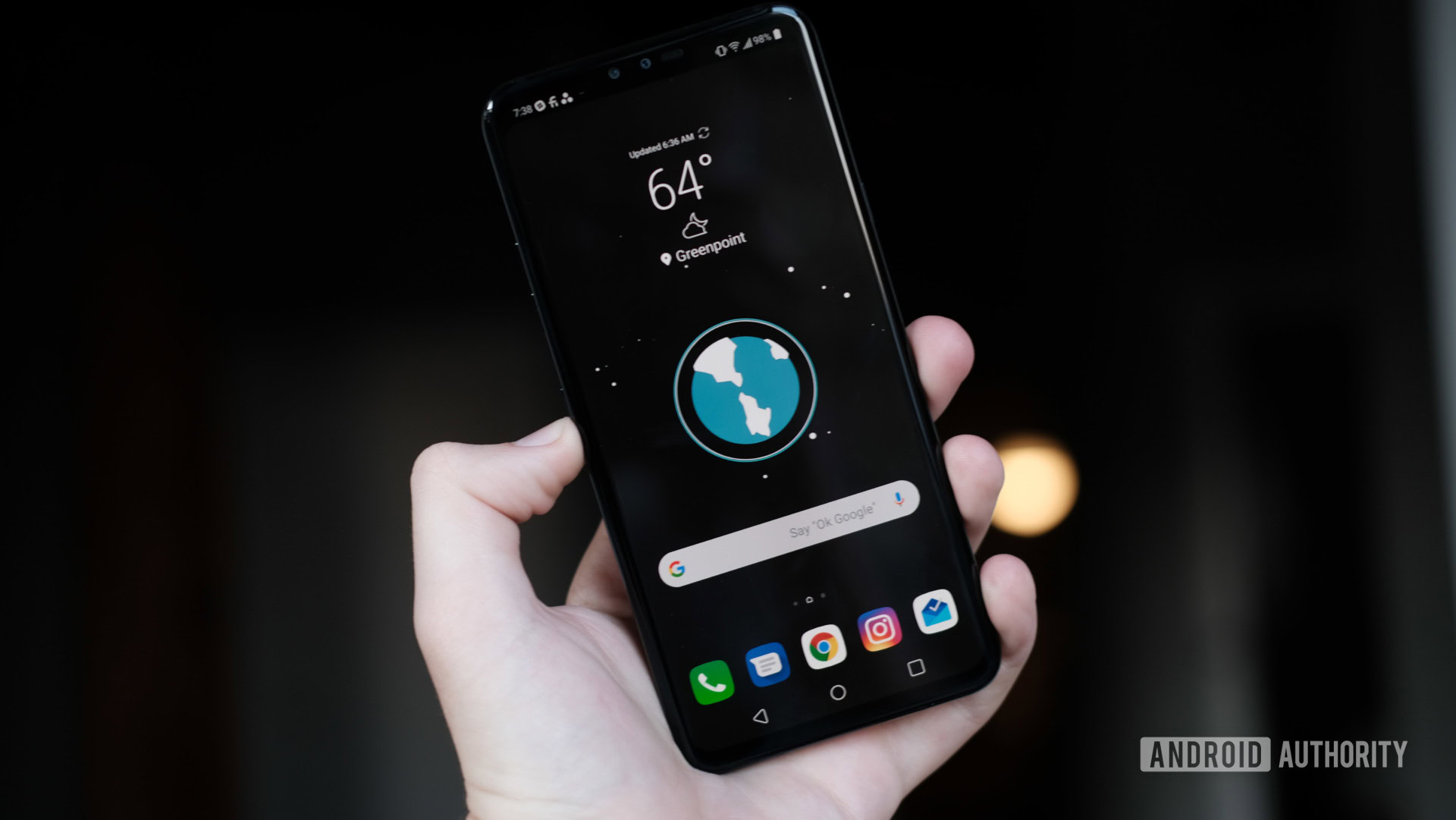
LG’s software is a very, very mixed bag.
The V40 ThinQ runs on Android 8.1 Oreo, and I’m pretty disappointed that we’re not seeing Android 9 Pie at launch. Google is putting in significant effort to make Android updates easier via Project Treble, and even phones as old as the Essential Phone already have Pie. Frankly, manufacturers need to do better bringing with the latest features and security improvements Google has made publicly available — I’m tired of excuses.
LG’s UI has always been very polarizing. On the one hand, it has used one design for quite some time, which isn’t always a bad thing. However, it feels like LG keeps adding UI elements without actually removing anything, and the result feels very cluttered. The home screen is fairly simple, but as soon as you swipe down you’re bombarded with contradicting UI elements.
This overlay is made to give you a top-down view of everything you’re doing, but I found it way too busy, with different stylistic elements making it feel cluttered. Your eyes aren’t immediately drawn to any one element of the UI, and you can’t even swipe anything away.
The settings menu is by far the worst offender. It’s organized in four different tabs, and it’s hard to find much of anything you might actually need. LG needs a major overhaul of this settings menu, as plenty of other manufacturers have gone for slimmed down, more functional approaches.
There is also no app drawer by default, but you can turn it on if you dig down deep enough in the settings menu.
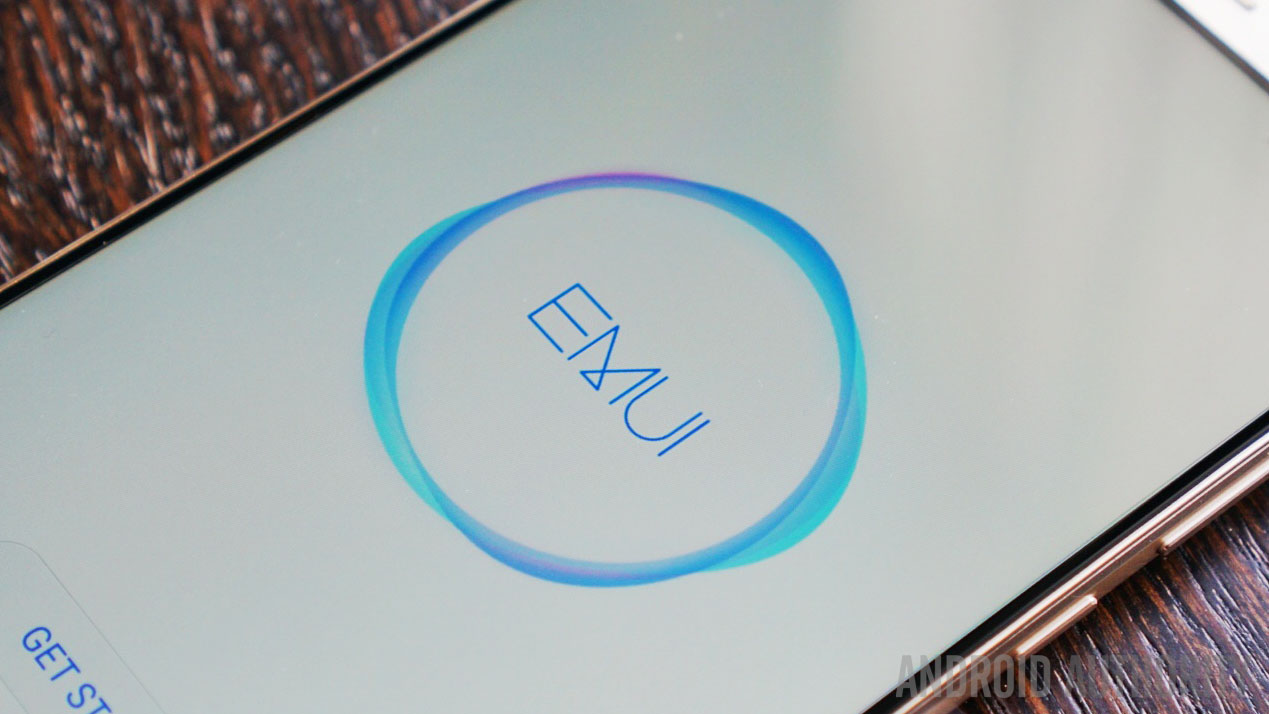
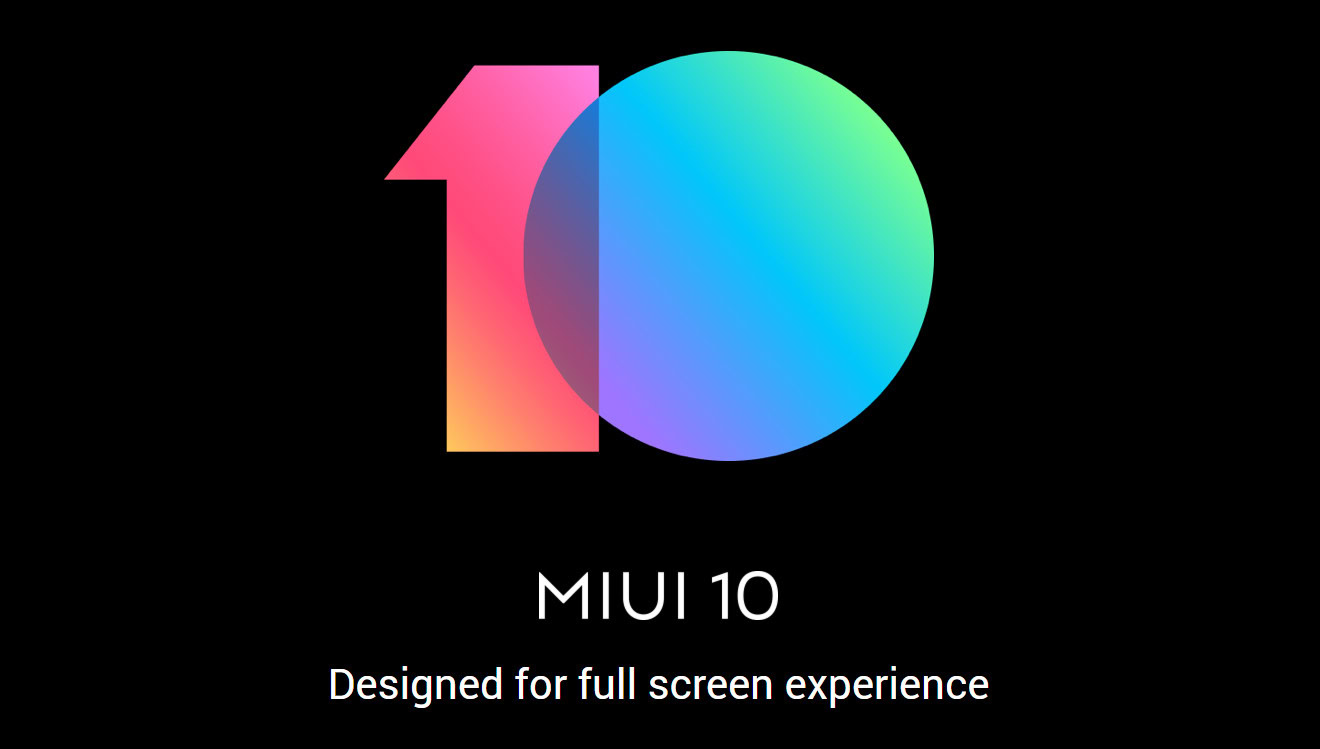
On the plus side, the V40 ThinQ adds Google Discover (formerly Google Feed), which you can access by swiping to the left of your home screen. I’m a huge fan of this, as it provides me with the news I care about before I care about it. If you miss Google Now, this is effectively a new version with fewer cards and more news.
You’ll either love the V40’s software experience or you’ll hate it. I really enjoy the simple bubble theme, since it matches Google’s Material Design 2.0 quite well. However, aspects like the settings menu leave a bad taste in my mouth. While I try to leave phones in their default states during the review process, I would probably throw a third-party launcher like Nova on this device if I was using it long term.
LG V40 specs
| LG V40 ThinQ | |
|---|---|
Display | 6.4-inch OLED FullVision display 538ppi 3,120 x 1,440 resolution Corning Gorilla Glass 5 19.5:9 aspect ratio HDR10-capable |
SoC | Qualcomm Snapdragon 845 2.8GHz, octa-core |
GPU | Adreno 630 |
RAM | 6GB LPDDRx4 |
Storage | 64 or 128GB UFS 2.1 MicroSD expansion up to 2TB |
Cameras | Rear Main camera: 12MP sensor, ƒ/1.5 aperture, 78° field-of-view, 1.4µm pixel size, OIS, Dual PD autofocus Super wide: 16MP sensor, ƒ/1.9 aperture, Crystal Clear Lens, 1µm pixel size, 107° field-of-view Telephoto zoom: 12MP sensor, ƒ/2.4 aperture, 1µm pixel size, 45° field of view Front Standard: 8MP sensor, ƒ/1.9 aperture, 1.12µm pixel size, 80° field of view Wide: 5MP sensor, ƒ/2.2, 1.12µm pixel size, 90° field of view |
Audio | Boombox Speaker DTS:X 3D Surround Sound 32-bit Hi-Fi Quad DAC 3.5mm headphone jack Audio Tuned by Meridian Super Far Field Voice Recognition |
Battery | 3,300mAh Non-removable Fast wireless charging Quick Charge 4.0-compatible (ships with QC 3.0 charger) Qi wireless charging USB Type-C port |
IP rating | IP68 MIL-STD 810G certification |
Network | LTE-A 4 Band CA |
Connectivity | Wi-Fi 802.11 a, b, g, n, ac Bluetooth 5.0 BLE NFC FM Radio |
Software | Android 8.1 Oreo |
Dimensions and weight | 75.8 x 7.7 x 158.7mm 169g |
Colors | New Aurora Black, New Platinum Gray, New Moroccan Blue, Carmine Red |
LG V40 gallery
LG V40 price and availability
The LG V40 ThinQ is now available. In the U.S., you can pick up the V40 from UScellular for $900, T-Mobile for $920, Sprint for $960, Verizon for $980, and AT&T for $94.99. There should be bundles and carrier deals and special sale discounts for the phone from time to time.
More details: LG V40 ThinQ: Where to buy, when, and for how much
LG V40 review: Final thoughts
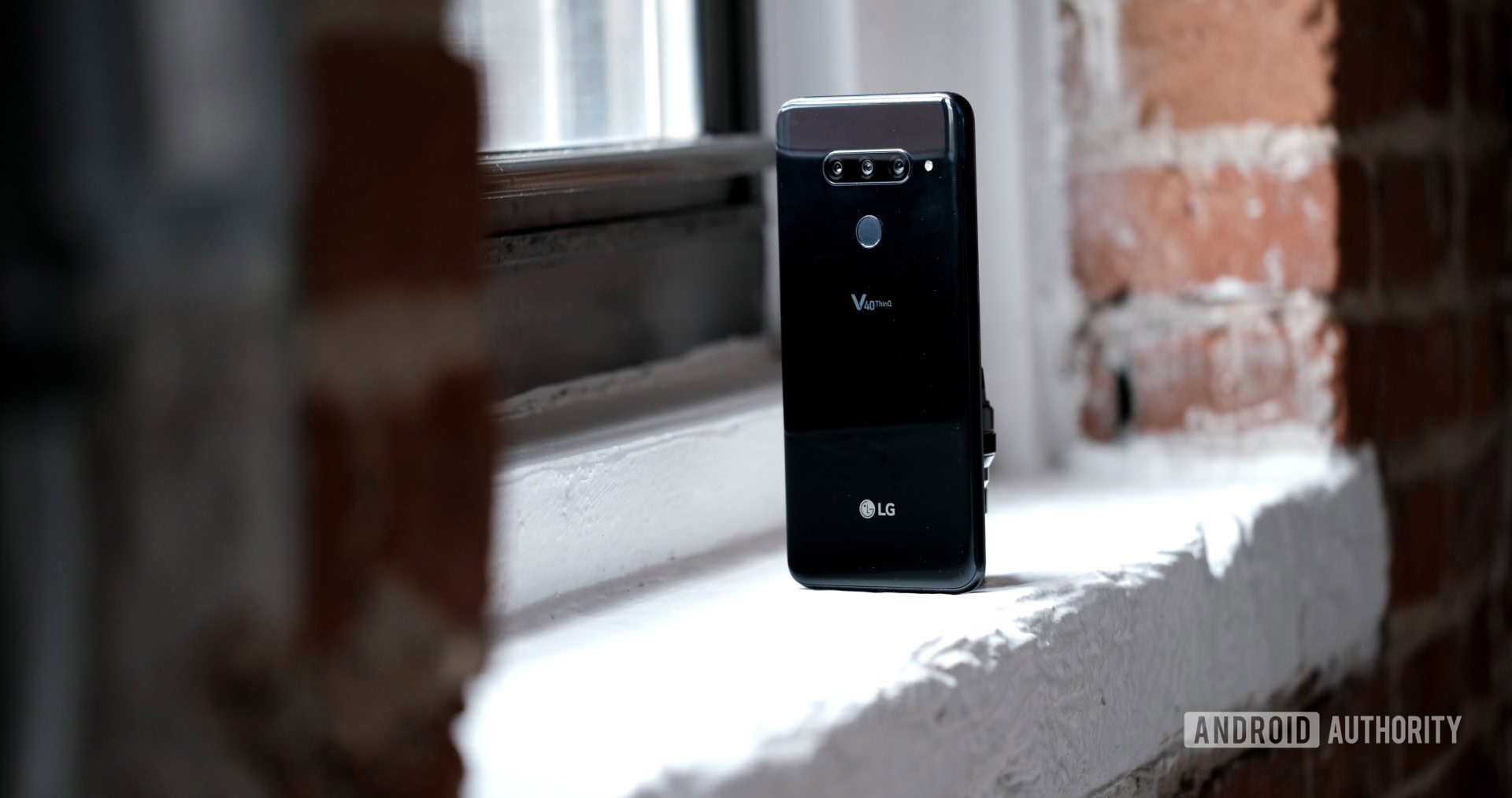
The LG V40 ThinQ is a solid phone on paper. It’s a device that can do pretty much anything, but unfortunately, it doesn’t do many things better than the competition.
While I commend LG for keeping a unique design, retaining the headphone jack and adding the Google Assistant button, I don’t see any of these things (besides maybe the quad DAC) as reasons you might buy this device over another, cheaper phone. The V40 is nearly $1,000, and at that price, you need to offer the best of the best in every category. Unfortunately, the LG V40 doesn’t do that.
For a phone that is almost entirely designed around the camera system, this is a pretty major disappointment. While having access to the wide angle and telephoto lenses are useful, there are many devices that can look nearly as good with a digital zoom. Add that to the fact that the images coming out of the camera are just so-so, and you’re left with a phone that feels like it can do everything — it just can’t do anything better than other phones.
If you want 95% of the features offered in the V40 for less money, I'd steer you towards the LG G7.
If this phone was $700, it might be worth a look. Sure, there are cheaper options out there, but most of them won’t have all the bells and whistles LG has managed to jam into this thing. Unfortunately, with so many other wonderful options on the market for less than $1,000, the V40 ThinQ is incredibly hard to recommend.
If you want 95 percent of the features offered in the V40 for less money, I might steer you towards the LG G7. While that phone still retails for around $750 new, it has dropped to below $650 multiple times. I personally think that the G7 has better build quality and sound, and all you’re really missing is the OLED screen and wide telephoto camera, though the G7’s LCD display can get extremely bright, up to 1,000 nits.
In short, the V40 ThinQ is a true multi-tool, but very few of its components are quite as sharp as the competitors. When you’re playing with the big dogs, second best just doesn’t cut it.
What are your thoughts on our LG V40 review? Are you planning on buying, passing, or are you still undecided?